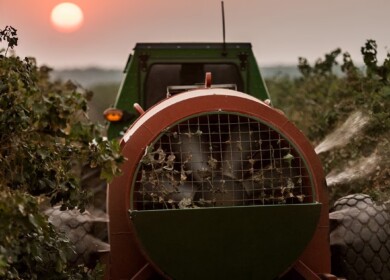Smart agriculture empowers vegetable growers in east China

In Guanqiao Village of Chongren County, Jiangxi Province, farmer Peng Jiangbo’s morning routine now involves analyzing data on a screen rather than working in the field. Thanks to sensors measuring temperature, humidity, and carbon dioxide levels, Peng utilizes real-time data to manage his large-scale vegetable farm.
“Figures can help farmers swiftly adapt their growing plans,” Peng said. “In the past, we relied heavily on experience to cultivate high-quality vegetables. Over recent years, planting technologies have begun to play a significant role. Now digital technology has emerged as another dominant factor.”
China has accelerated the development of smart agriculture, building digital villages and narrowing the “digital gap” between urban and rural areas, enhancing production efficiency and farmers’ income. Chongren County, a major vegetable-growing area, has embraced this shift by leveraging technologies such as 5G, the Internet of Things, artificial intelligence, and blockchain. The county has established digital platforms in over 20 vegetable bases to facilitate greenhouse production and vegetable sales.
Peng’s greenhouse benefits from a smart monitoring system that proved crucial during a critical growth stage for his sponge gourd crop. When a cold snap was forecasted, Peng activated the greenhouse heater and ensured the insulating layer was sealed, preventing potential losses.
With his mobile phone, Peng can manage the greenhouse’s sunproof net, water curtain, and ventilation system remotely. The intelligent monitoring system also sends alerts when anomalies are detected.
“In the past, anyone who could manage a field of roughly 50 mu (about 3.33 hectares) well could be labeled a skilled cultivator. Now, a plot ten times that size requires just one or two individuals for maintenance,” Peng noted.
Smart agriculture is transforming growers in Chongren into “new farmers” who wield advanced technological tools. Peng Donghua, a veteran white gourd grower in Heshang Town, uses a digital platform to access information on wholesale prices, regional price differentials, and price index trends. This data allows growers to make informed decisions regarding crop varieties and optimal selling times. Last year, Peng Donghua predicted a fluctuation in white gourd prices and adjusted his seedling time accordingly, resulting in a peak price sale in late June.
If vegetables show signs of disease, growers can seek help from agricultural experts via the digital platform. Shao Nianping, a grower from Xiawu Village, used the platform to consult an expert from the Jiangxi Academy of Agricultural Sciences about issues with his cauliflowers. Following the expert’s advice, the cauliflowers recovered within five days.
In 2023, Chongren’s vegetable sowing area reached 204,000 mu, with a total production of 410,000 tonnes, valued at 1.02 billion yuan (approximately 143.64 million U.S. dollars), a 36 percent increase year-on-year.
“Chongren will continue to deepen the implementation of smart agriculture construction projects, ensuring ‘new farmers’ a promising career path,” said Xiao Zhihua, chief of the county’s bureau of agriculture and rural affairs.
Source: China Development Gateway
Enjoyed this story?
Every Monday, our subscribers get their hands on a digest of the most trending agriculture news. You can join them too!


















Discussion0 comments